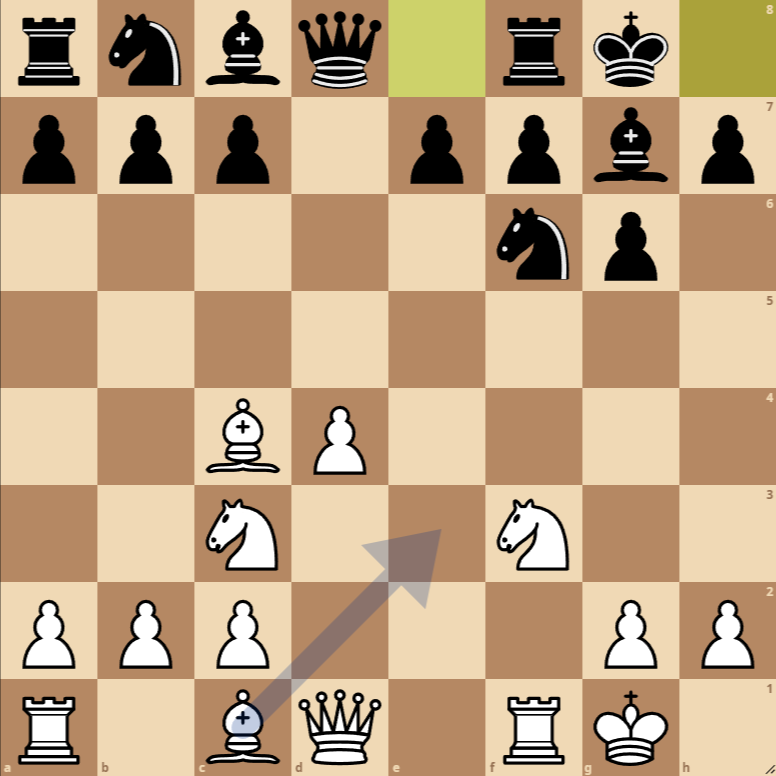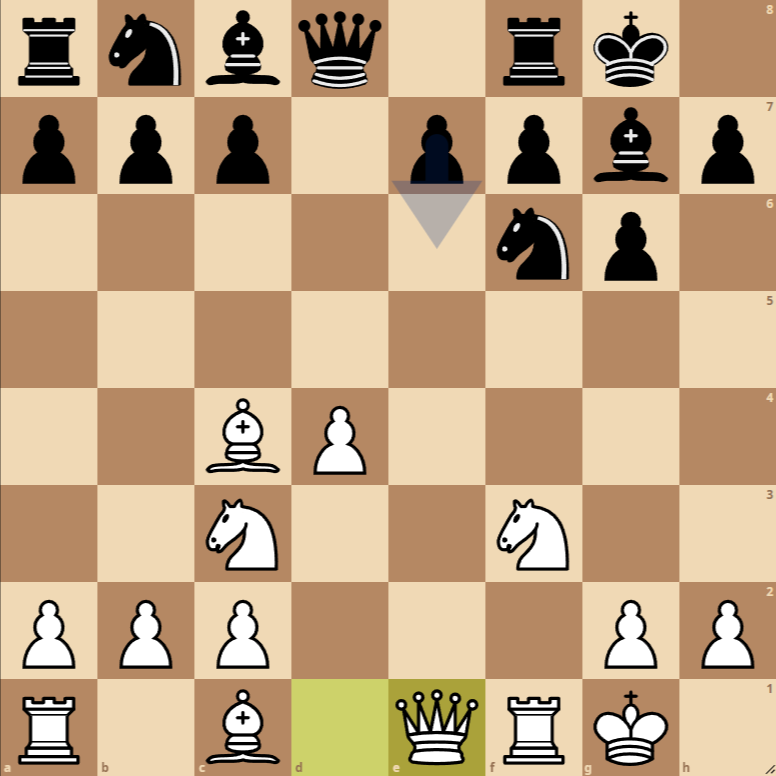How to Play the Blackmar-Diemer Gambit Accepted Bogoljubow Defense Studier Attack

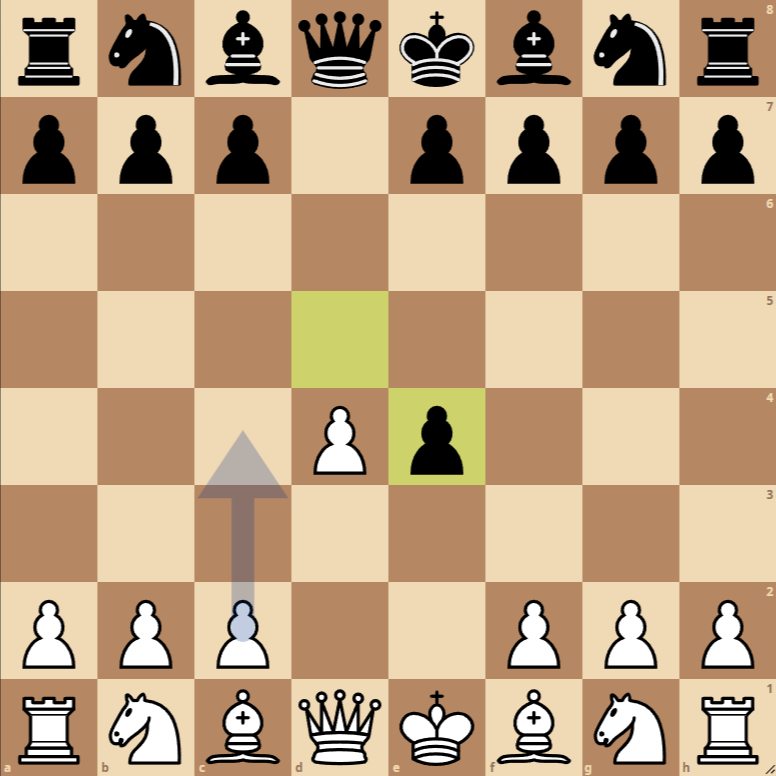
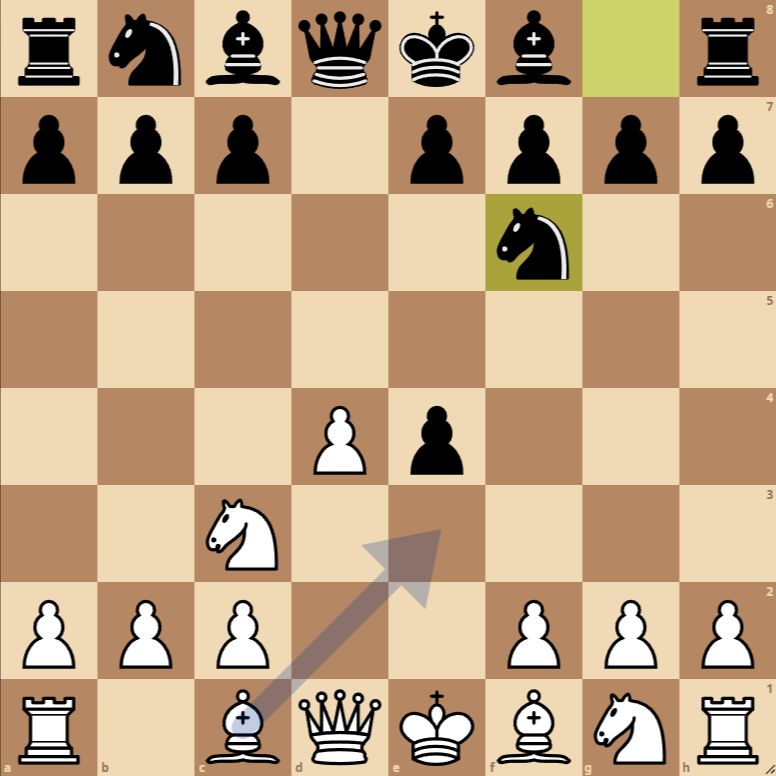
- 1. d4 d5: Whites start by controlling the center, and Blacks respond in the same way, establishing a solid structure.
- 2. e4 dxe4: Whites offer a pawn to disrupt Blacks’ center and open lines, while Blacks accept the gambit.
- 3. Nc3 Nf6: Whites develop their knight, aiming at the e4 pawn, while Blacks develop a knight to defend the pawn and control the center.
- 4. f3 exf3: Whites aim to regain the offered pawn and open the diagonal for their bishop, while Blacks capture the f3 pawn, maintaining tension in the center.
- 5. Nxf3 g6: Whites recapture the pawn with the knight, preparing for castling and increasing pressure in the center. Blacks prepare to fianchetto the bishop to control the long central squares.
- 6. Bc4 Bg7: Whites develop their bishop to an active square, targeting Blacks’ kingside. Blacks fianchetto their bishop, strengthening their great diagonal.
- 7. O-O O-O: Both sides castle, seeking safety for their kings and connecting their rooks.
- 8. Qe1: Whites move their queen, preparing an attack on the kingside, aiming to increase pressure and coordinate their pieces for a potential attack.
Variants of the Blackmar-Diemer Gambit Accepted Bogoljubow Defense Studier Attack
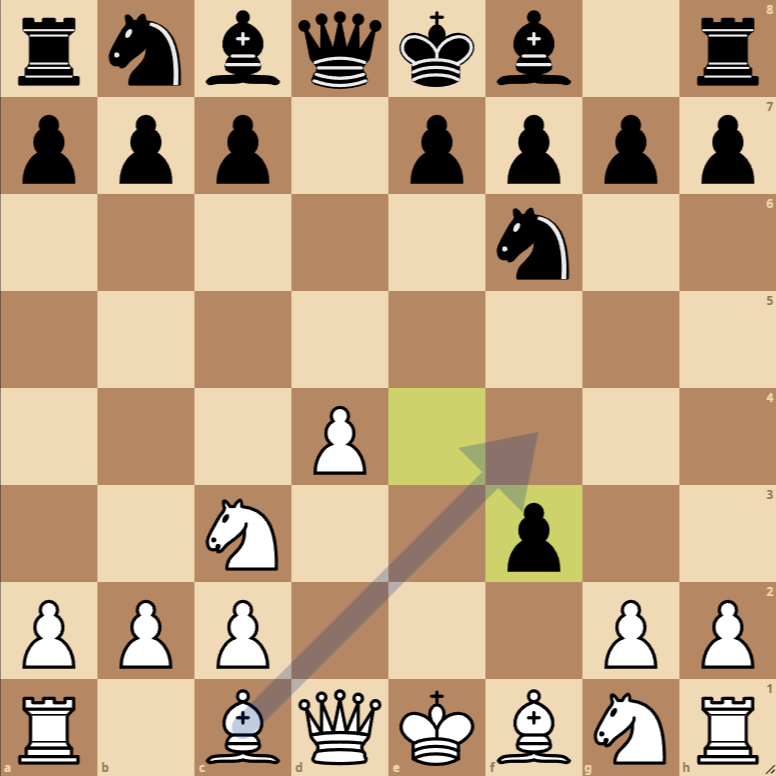
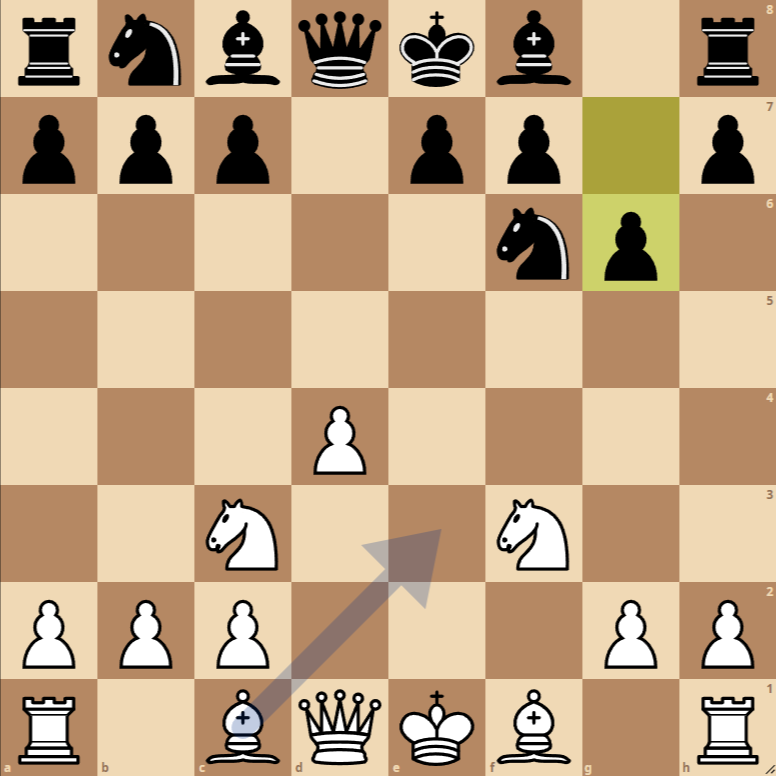
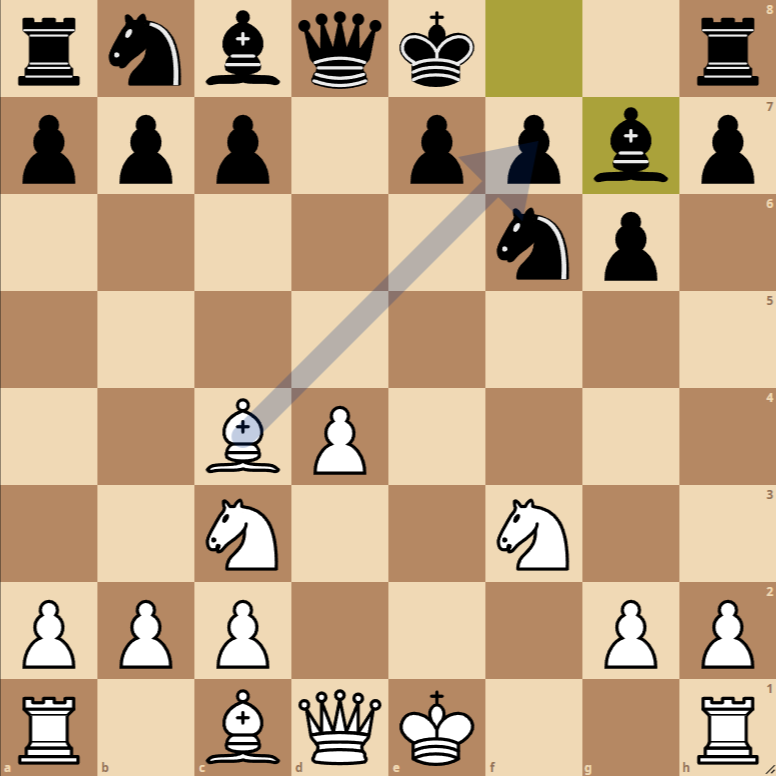
Bogoljubow Defense
This defense is characterized by accepting the gambit and quickly developing minor pieces by Blacks, aiming to counteract the center and prepare to return material if necessary for positional or time advantage.
Studier Attack
In the Studier Attack, Whites focus on rapid development and seek attacking opportunities on the kingside, utilizing the queen move to e1 to coordinate an attack along with the bishop on c4 and the knight on f3, targeting potential weaknesses in the black king’s position.
The Position Resulting from the Sequence of Moves in the Blackmar-Diemer Gambit Accepted
Specifically in the Bogoljubow Defense with the Studier Attack variation, it offers a board rich in tactical and strategic possibilities for both sides. Let’s break down the implications of the current position and how the following suggested moves:
Cc6, Ag4, or c6
Fit into the strategic landscape for both players.
Strategies and Tactics
For Whites:
- Control of the center and rapid development: Whites have sacrificed a pawn for the quick development of their pieces and control of the center. Placing the bishop on c4 and early castling are moves aimed at quick mobilization towards a kingside attack.
- Pressure on the kingside: With developed pieces targeting the opponent’s kingside, Whites can look for opportunities to open lines and diagonals, facilitating a direct attack on the black king.
- Dynamism with potential sacrifices: The accepted gambit suggests that Whites are willing to play aggressively, even at the cost of material, to unbalance Blacks and seek a decisive attack.
For Blacks:
- Utilize material advantage: Although Blacks are less developed, they have an extra pawn as a result of the gambit. It is crucial for Blacks to efficiently develop their pieces to maintain and capitalize on this material advantage.
- Defense and counterattack: With Whites aiming for aggressive play, Blacks must be alert to defend adequately while seeking opportunities to counterattack, especially in the center and on the kingside.
- Strategic piece placement: Moves like Cc6, Ag4, or c6 not only contribute to development but also prepare the ground for broader operations, such as controlling key squares, increasing pressure in the center, and preparing pawn advances on the queenside.
Next Best Moves
Cc6: Develops a minor piece and increases control over the center. This move prepares Black’s pieces to withstand pressure in the center and possibly launch a counterattack.
Ag4: This move aims to trade the bishop for the knight on f3, removing a key piece from Whites’ attack. Additionally, it can contribute to weakening Whites’ kingside defense if capturing with the g pawn, opening the g-file for offensive operations.
c6: Strengthens the center and prepares expansion on the queenside, possibly with the d5 advance. This move can also be a precursor to piece rearrangements to improve coordination and effectiveness in defense and counterattack.
